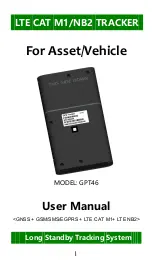
Figures
Figure 2-1 Equipment supplied in the Jupiter 30 GPS Development Kit
............................ 4
Figure 3-1 Front and back panels of the Jupiter 30 development unit .............................. 5
Figure 3-2 Configuration DIP switch
.................................................................................. 7
Figure 3-5 Internal layout of the development unit
............................................................. 8
Figure 3-3 Function LEDs on front panel ........................................................................... 9
Figure 3-6 Jupiter 30 adapter board .................................................................................10
Figure 3-4 Pin layout of the clock out connector ...............................................................11
Figure 4-1 Development unit test equipment .....................................................................15
Tables
Table 3-1 DIP switch settings
............................................................................................. 7
Table 3-2 Pin functions of the clock out connector
............................................................ 9
Table 3-3 Mating connector part description
.....................................................................11
Table 3-4 Pin functionality
.................................................................................................11
Table 3-5 Signals available on the test points
...................................................................12
Table 3-6 Connections J1 (2 mm pitch header) and J2 (2.54 mm pitch header)
..............13



































